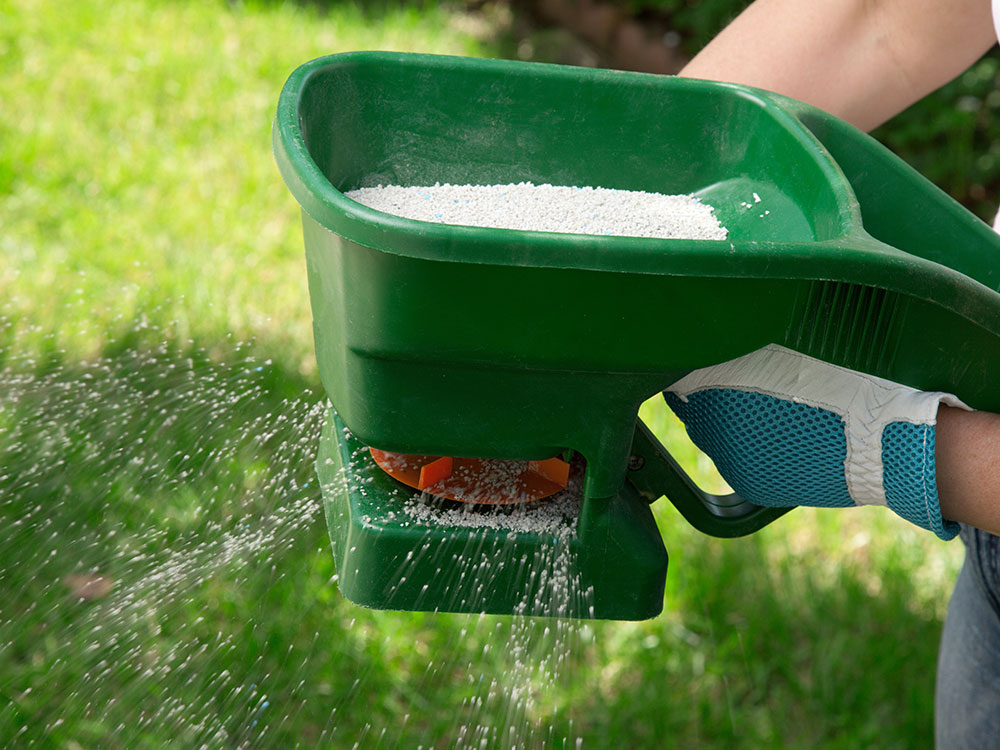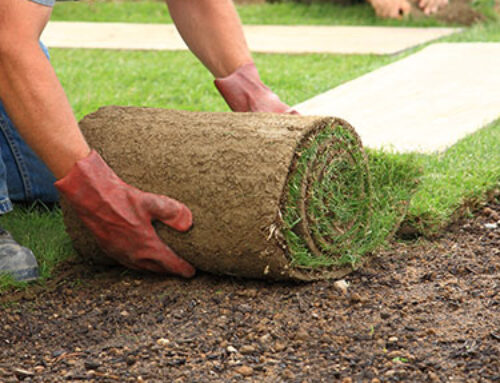Everyone likes the look of a nice, green lawn, but proper application of lawn fertilizers is critical.
The health and vigor of your lawn depend upon applying the right amount of fertilizer at the appropriate times. Too little or too much fertilizer will cause problems for the growth, appearance, and health of your lawn.
Fertilizer improperly applied can harm the environment. Over-application or misapplication (Figure 1) can result in leaching of fertilizer through the soil into groundwater supplies. Fertilizer runoff may also get into surface water. Applying too little fertilizer may result in a lawn with minimal density of root and shoot systems, a condition that may allow for leaching or runoff to occur more easily.
Proper fertilization is very important for sustaining a healthy lawn. Fertilization and other cultural practices influence the overall health and quality of the lawn and reduce its vulnerability to numerous stresses, including weeds, insects, and disease. It is very important that anyone fertilizing their lawn be familiar with and follow the Florida-Friendly Landscaping™ Best Management Practices (FFL BMPs). These practices are designed to maintain healthy lawns and reduce any potential nonpoint source pollution of water resources that might result from lawn and landscape fertilization and other cultural practices. There are now state and local regulations that cover lawn fertilization, so be aware of city and county guidelines and always follow the directions on the fertilizer bag. For more information on BMPs, please refer to ENH979, Homeowner Best Management Practices for the Home Lawn (http://edis.ifas.ufl.edu/ep236).
A soil test should be done to determine what nutrients are available to the lawn and what the soil pH is. The local Extension office has instructions and supplies for taking soil samples and submitting them to the Extension Soil Testing Laboratory for analysis. In particular, phosphorus levels are best determined by soil testing. Since many Florida soils are high in phosphorus, it is often not necessary to add phosphorus to a lawn once it is established.
As a general rule, the first fertilizer application of the year should be early April in Central Florida and mid-April in North Florida. In South Florida, fertilizer applications may be made throughout the year since growth is year-round.
Fertilizer should be applied to St. Augustinegrass in 2–6 applications from spring green-up through fall. Do not apply too early in the growing season, particularly in North Florida, because late-season frosts may damage the grass. Likewise, do not fertilize too late in the year after growth has subsided. In South Florida, year-round fertilization is acceptable.
For professional residential or commercial lawn maintenance and fertilization in St Johns County, Julington Creek Plantation, Durbin Creek, Nocatee and surrounding communities, call or contact PGM today!
The preceding information provided for informational purposes. Experts courtesy of: UF/IFAS. “Florida Lawn Handbook: Best Management Practices for Your Home Lawn in Florida, 3rd ed (2005)“; “Let Your Lawn Tell You When To Water 1“; Photo courtesy flickr®; Kevin Dooley under the Creative Commons Attribution license.





